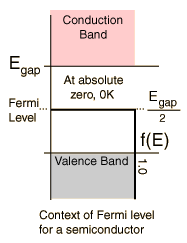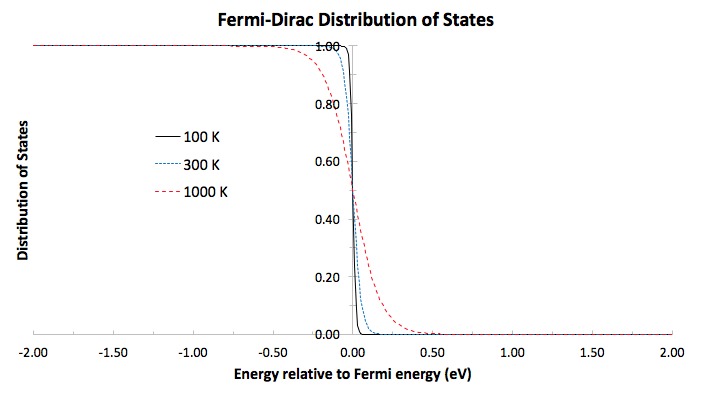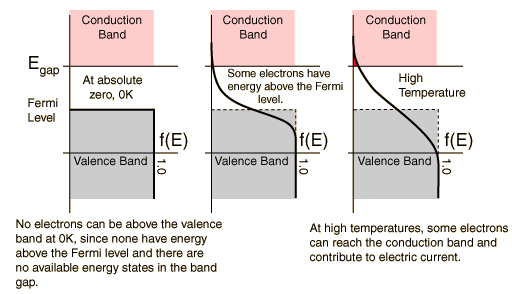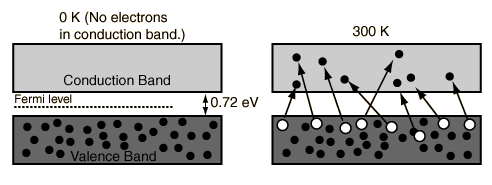What is the Fermi level? I heard it is also called the chemical potential.
1 Answer
The Fermi level
For a semiconductor, it lies halfway between the bottom of the conduction band and the top of the valence band:

From that derivation, we obtained the Fermi distribution function (for electrons only, not bosons):
#f(epsilon_i) = 1/(1 + e^((epsilon_i - epsilon_F)//k_BT))#
And for this, we have three cases of occupied electron energy states for arbitrary nonnegative temperatures. That is summarized here with an example at

These cases are:
When this is the case,
#0 < e^((epsilon_i - epsilon_F)//k_BT) < 1# , so
#0 < f(epsilon_i) < 1/2# .
When this is the case,
#e^((epsilon_i - epsilon_F)//k_BT) = 1# , so
#f(epsilon_i) = 1/2# exactly.
When this is the case,
#e^((epsilon_i - epsilon_F)//k_BT) > 1# , so
#1/2 < f(epsilon_i) < 1# .
For varying temperatures, we would see the following:

And we would see that as
Put another way, at very low temperature, conductivity is limited because little electron density can surpass the Fermi level.
EXAMPLE
Now, consider that we are at

Then:
#f(epsilon_F + "0.36 eV") = 1/(1 + e^((epsilon_F + "0.36 eV" - epsilon_F)//k_BT))#
#= 1/(1 + e^("0.36 eV"//k_BT))#
The Boltzmann factor is
#k_BT = 1.38065 xx 10^(-23) cancel"J""/"cancel"K" xx 298.15 cancel"K" xx ("1 eV")/(1.602 xx 10^(-19) cancel"J")#
#=# #"0.02570 eV"#
So the fraction of electron states occupied
#color(blue)(f(epsilon_F + "0.36 eV")) = 1/(1 + e^("0.36 eV"//"0.02570 eV"))#
#= color(blue)(8.23 xx 10^(-7))#

